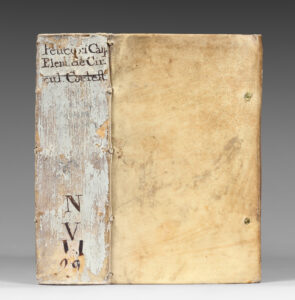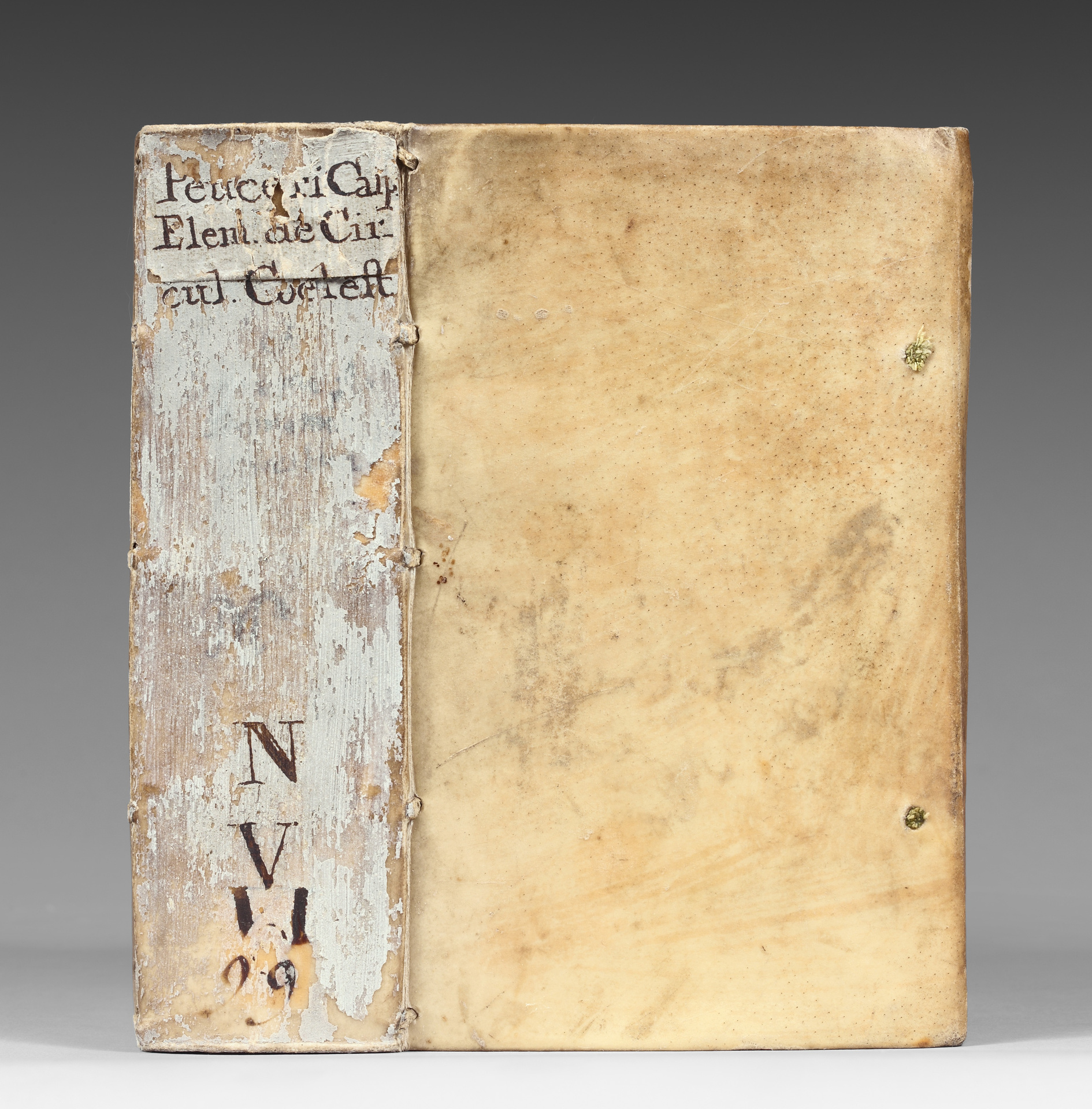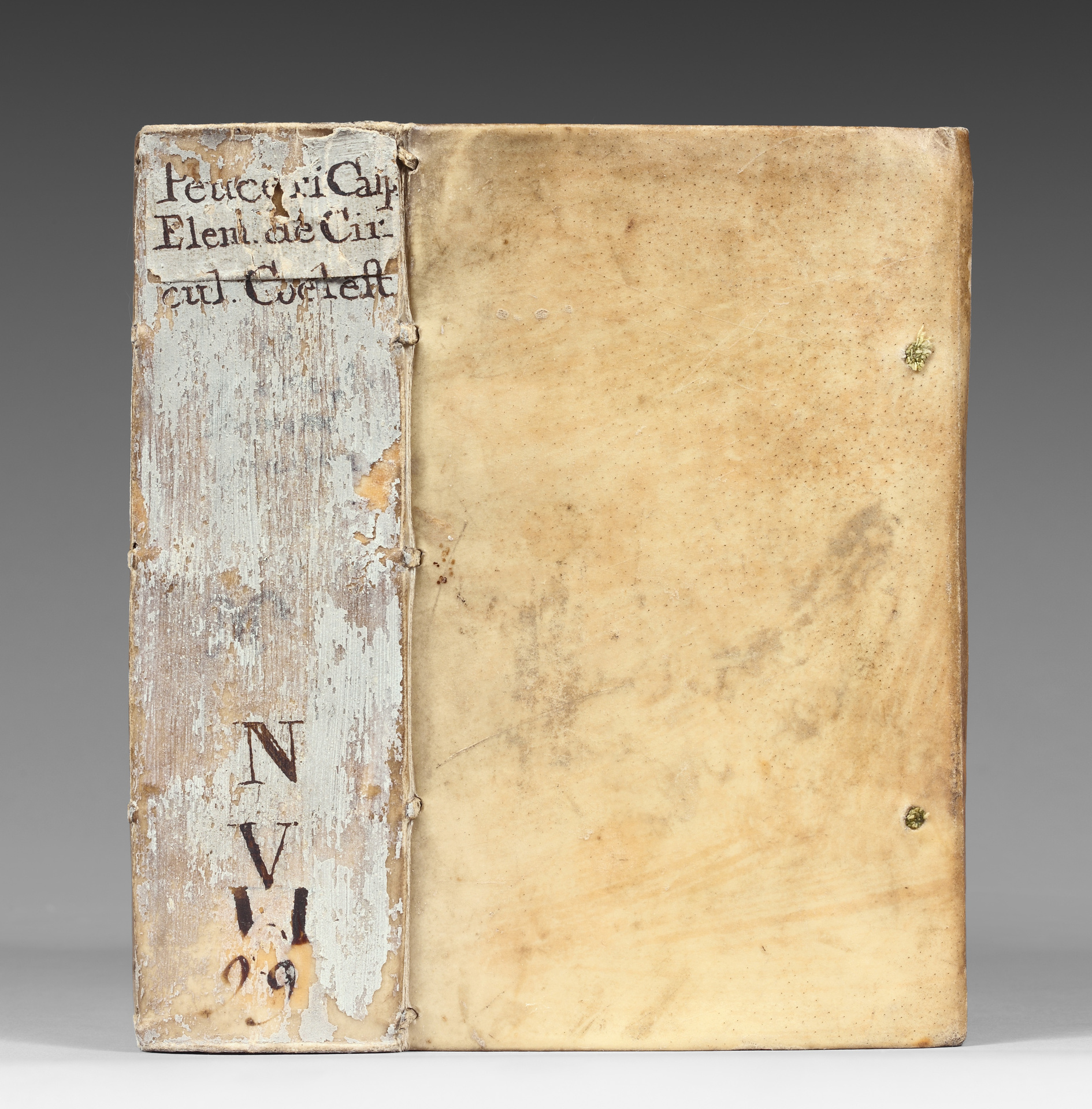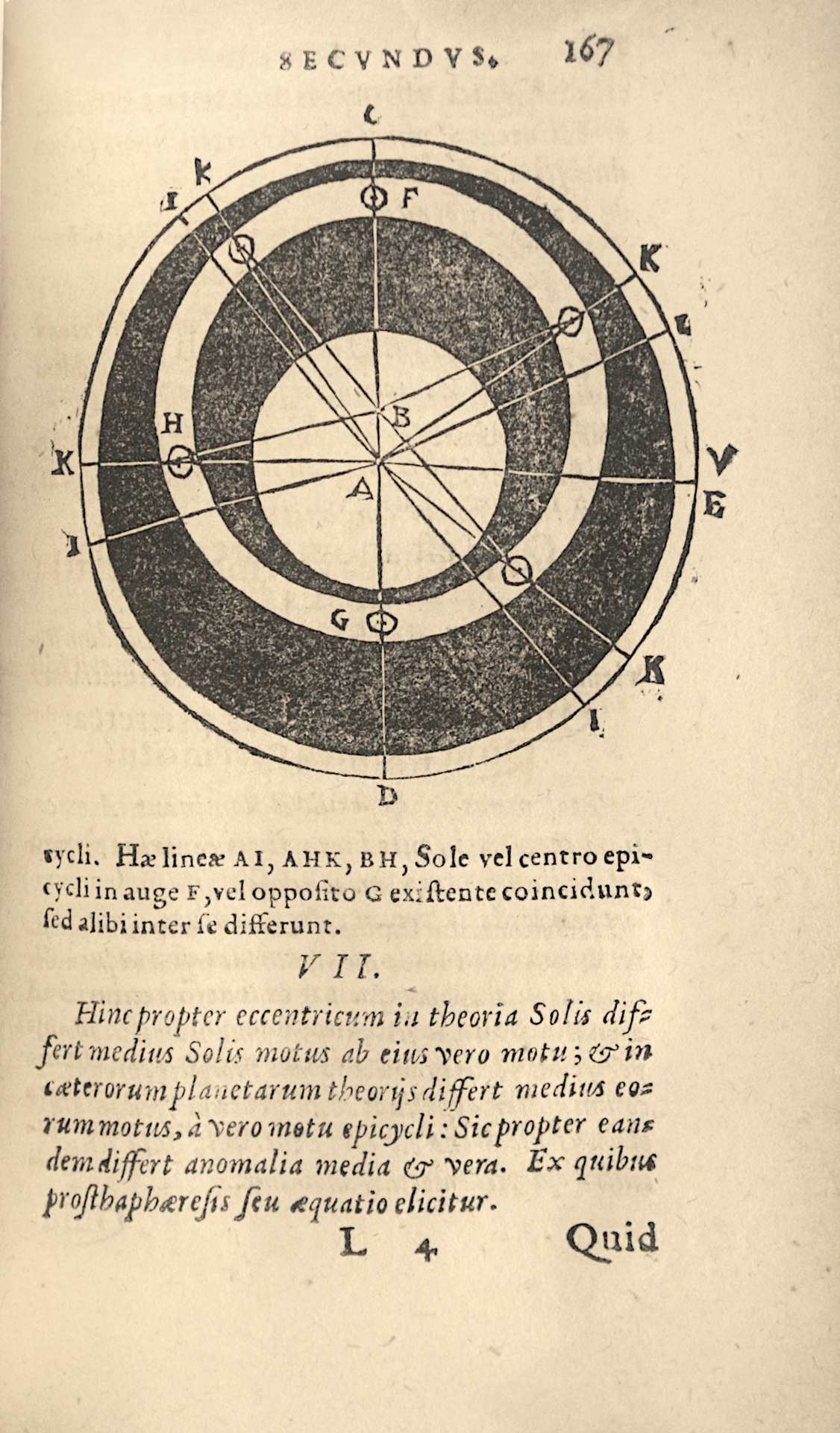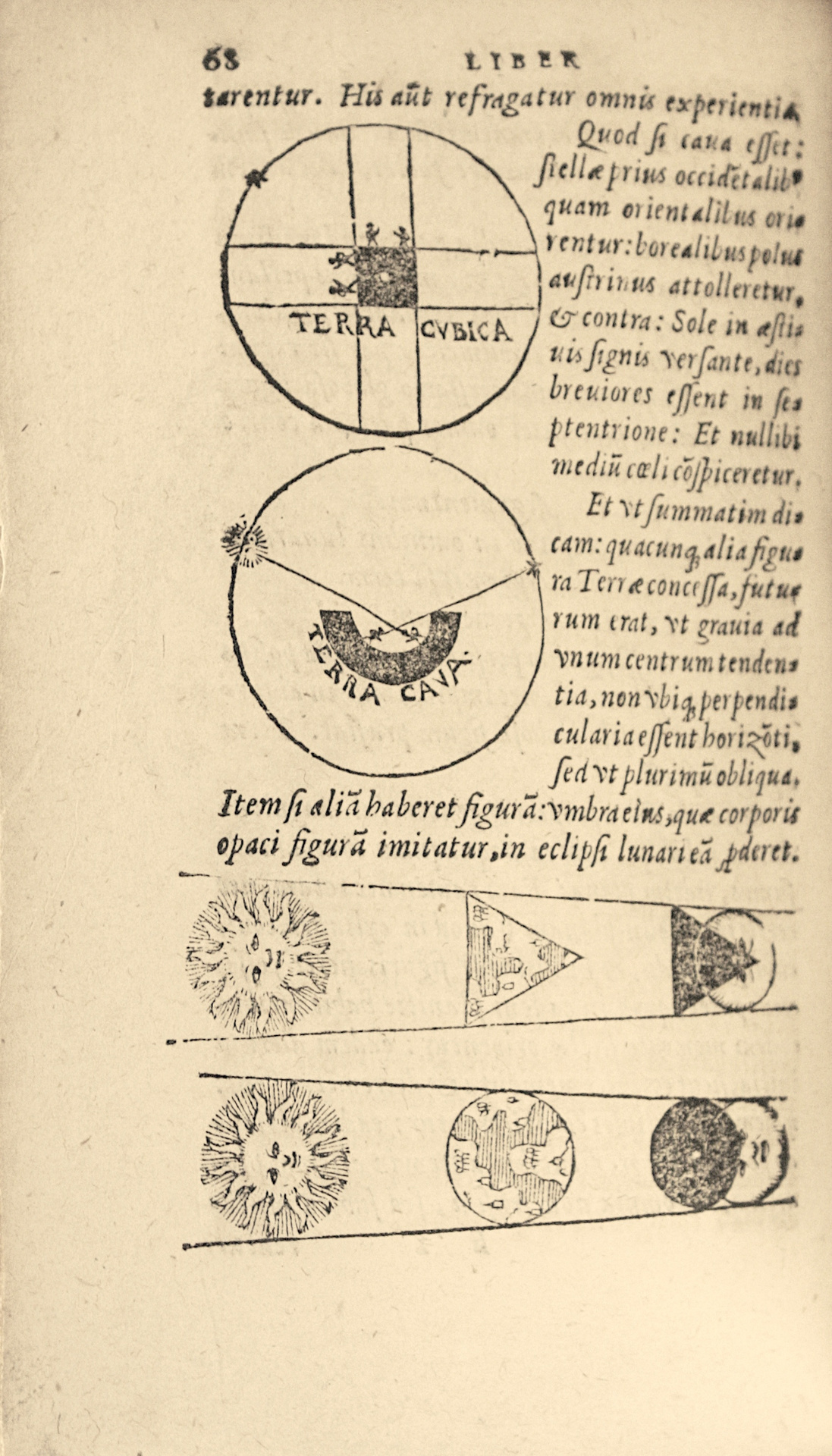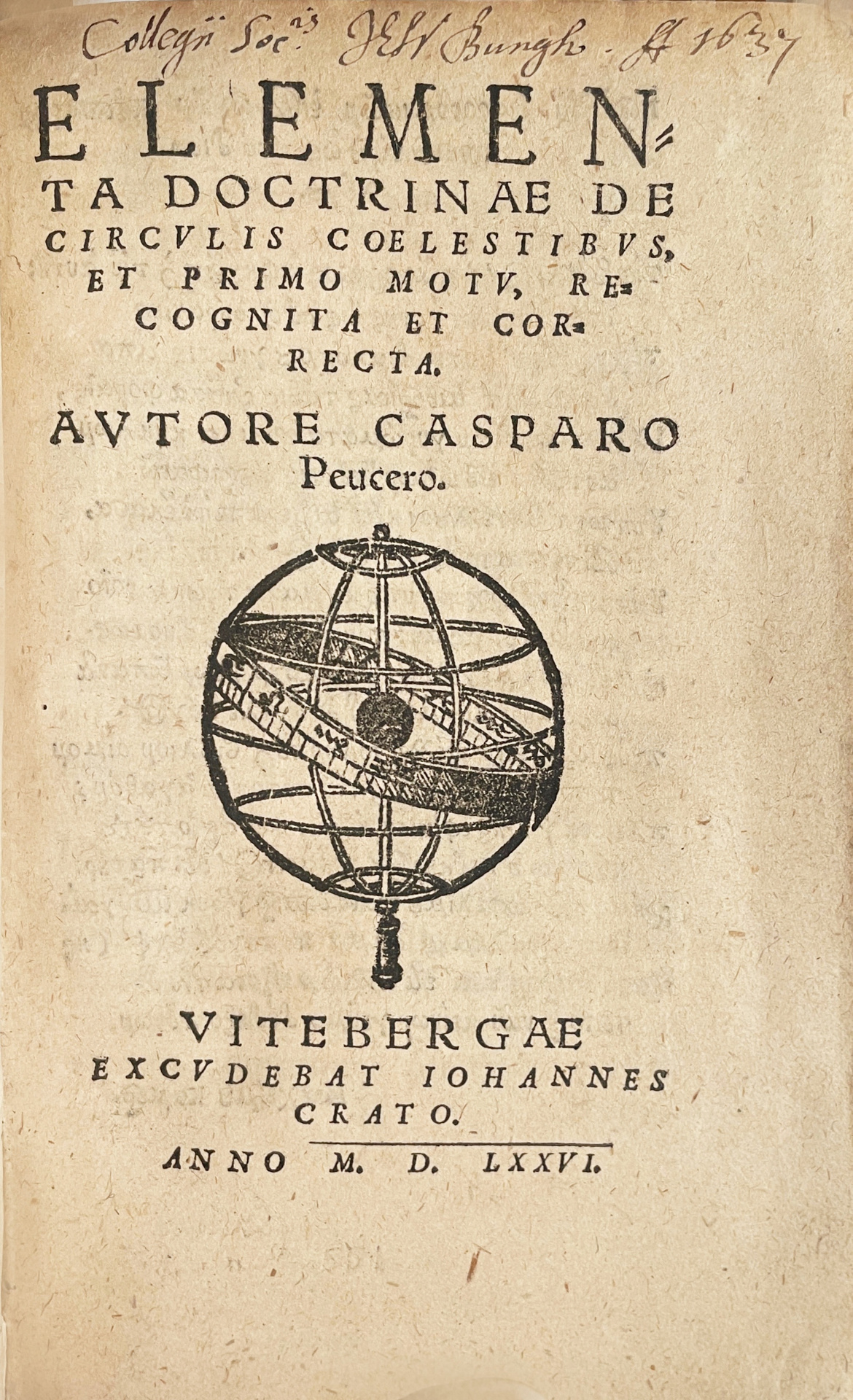Heidelberg, Jacobus Milius, 1582.
(17) ll., (1) bl. l., 495 pp., (1) p. and 6 folding plates.
[Preceded by:]
I – Peucer, Caspar. Elementa doctrinae de Circulis coelestibus et primo motu, recognita et correcta.
Wittenb., Joh. Crato, 1576.
(8) ll., 304 pp. (gap in the pagination without loss), 8 folding plates.
Two astronomical works bound in one volume 8vo [155 x 98 mm], full overlapping ivory vellum, remains of ties, flat spine contemporary painted with the author’s name, title and library marks handwritten in black ink, sprinkled edges. Contemporary binding.
II/ Precious and extremely rare first edition of the “Epitome Astronomiae”, the major work of Joannes Kepler’s (1571-1630) master, the astronomer Michael Maestlin (1550-1631).
Caspar, Kepler S. 4/; Houzeau/L. 2747; Zinner 3041; vgl. Admas M 85 ff u. STC 585.
“Michael Maestlin (also called Mästlin, Möstlin or Moestlin), was born on September 30th 1550 in Göppingen in Bade-Württemberg and died on October 20th 1631 in Tübingen. He was a German astronomer and a mathematician, known to be Johannes Kepler’s mentor.”
Maestlin studied theology, mathematics and astronomy at the Tübinger Stift in Tübingen, a town of Württemberg. He obtained his master’s degree in 1571 and became a Lutheran deacon in 1576 in Backnang while he was continuing his studies in this town. In 1580, he became a math teacher at the University of Heidelberg, then at the one of Tübingen in 1583 until he passed away.
In 1582 he publishes his famous “Epitome astronomiae”, a true popular introduction to astronomy which influenced Kepler so much, who was his student at that time.
“Johannes Kepler… absolvierte zwar in Tübingen die Theologie, fand aber an den astronomischen Vorlesungen von Michael Mästlin (Göppingen 1550 – Tübingen 1631 ; Prof. math. Heidelberg u. Tübingen) mehr Geschmack als an der damaligen Orthodoxie (Wolf i, 24).”
Kepler joined the University of Tübingen in 1589, where he received a complete training. “His professor of astronomy, Michael Mästlin, teaches him the Copernican system, of which he is a careful advocate.”
Kepler who became, thanks to Maestlin, a convinced supporter of heliocentrism, explains in a first work, the Prodomus… mysterium cosmographicum published in 1596, why according to him Ptolemy’s system has to give up his place to the Copernican representation of the world. Though, haunted by Pythagorean ideas, he believes the Universe is built on a geometric architecture. Here is why he elaborates an ingenious geometric model of the Copernican system, in which the orbit of each planet occupies a sphere limited to a regular polyhedron and included in another one. Actually, he has the conviction that the number of planets, their distance to the Sun and their revolution speeds are not just a coincidence. A systematic study of the planet Mars motion, after laborious calculations he controls thanks to precise observations made by Tycho Brahe, leads him to give up the hypothesis of a circular motion – admitted since Aristotle – in favor of an elliptic orbit. This work leads Kepler to the discovery of the first two laws which will immortalize his name. He publishes them in 1609 in his Astronomia nova. The first one states that each planet follows in the direct sense an ellipse center of which the Sun stands in the center; the second one that areas described by the ray vector from the center of the planet towards the center of the Sun are proportional to the time used to describe them.
Kepler endeavors to demonstrate the existence of a harmonic relation between the fastest and the slowest speed of planets. Thus he discovers the third fundamental law of planet motion that he publishes in 1619 in his Harmonices mundi: the squares of periods of planet revolutions are proportional to the cubes of the great axes of their orbits.
This first edition is illustrated with many astronomical and mathematical woodcuts including one with mobile parts.
I / At the beginning of the volume the rare edition of Caspar Peucer: “Elementa doctrinae de Circulis coelestibus et primo motu” was contemporary bound.
I. Houzeau / L. 2556; Zinner 2743; vgl. Adams P 936 u. STC 689.
“It is the first work of some value written in the spirit of Copernicus. Works by Peucer were reported on the Index Librorum Prohibitorum » (H.L.)
Caspar Peucer (1525-1602), an astronomer and a mathematician, was friend with Melanchton.
The “Elementa doctrinae de circulis coelestibus” are his main contribution to the evolution of astronomical science.
“This work which was very popular is written after Copernicus principles.”
It is illustrated with many astronomical woodcuts with mobile parts.
A superb copy gathering two very rare and major astronomical texts, very well preserved in its contemporary overlapping vellum.
Outside Germany, we were able to locate only two copies of the rare first edition of Maestlin’s text in the world: Edinburgh University Library and Adler Planetarium in the United States.
